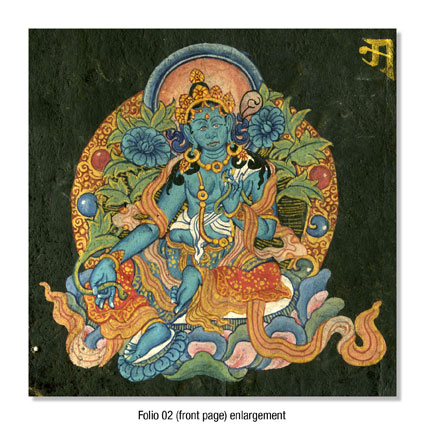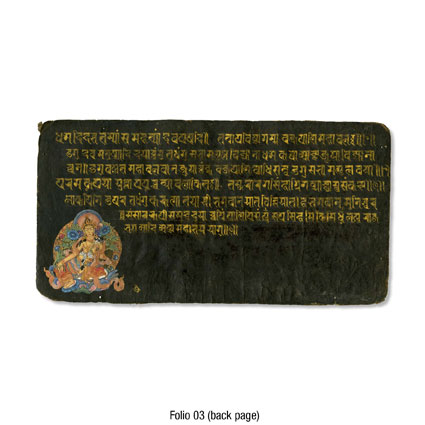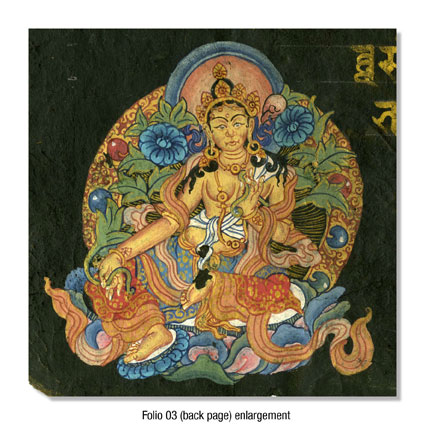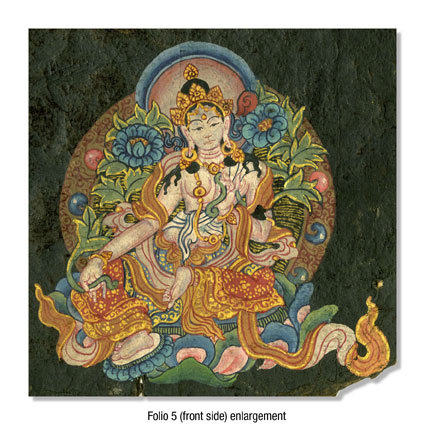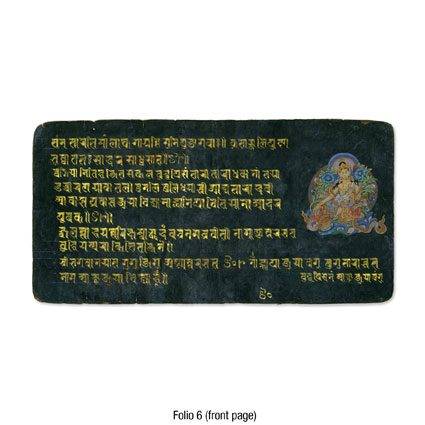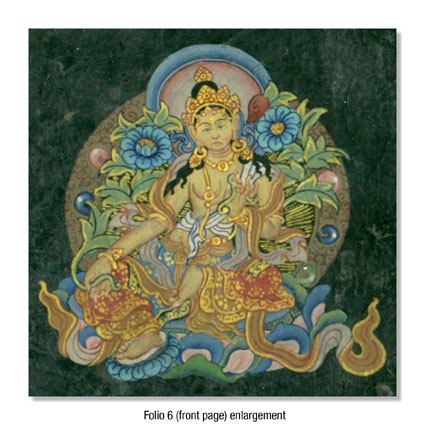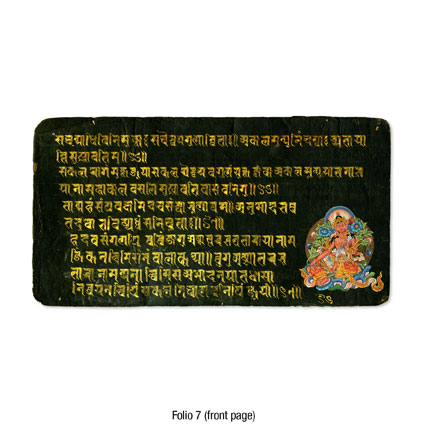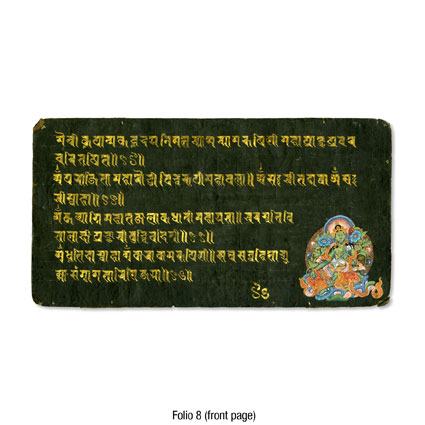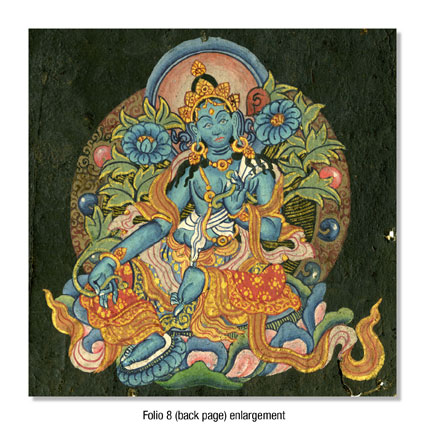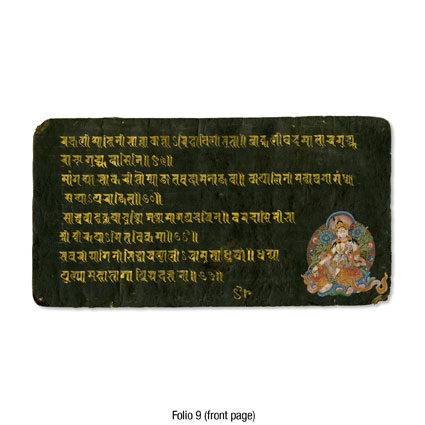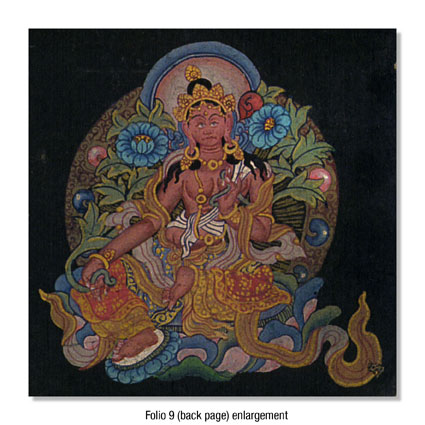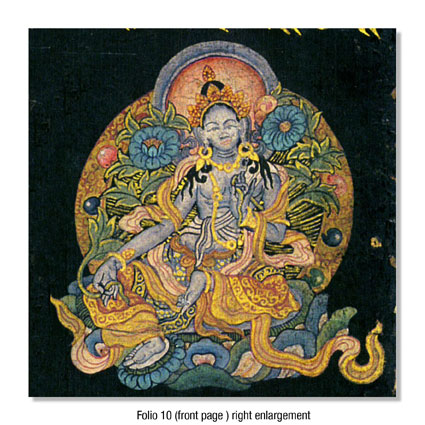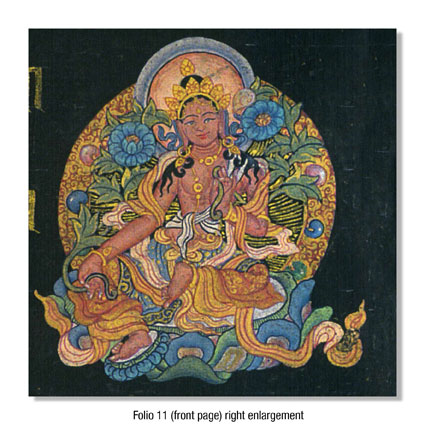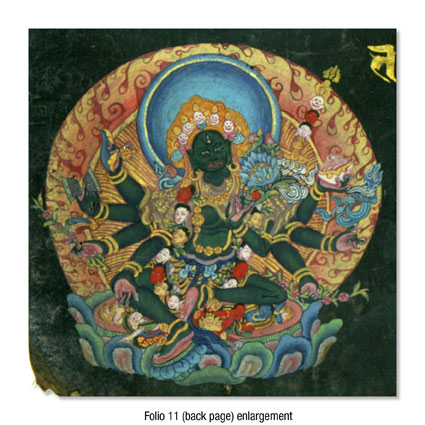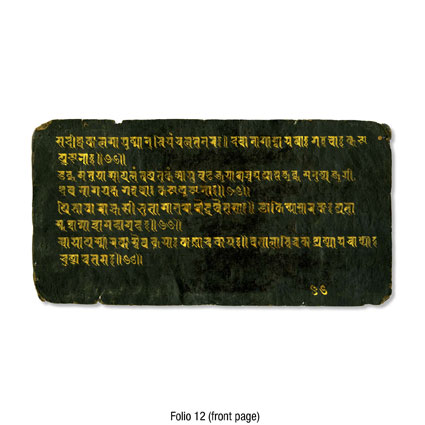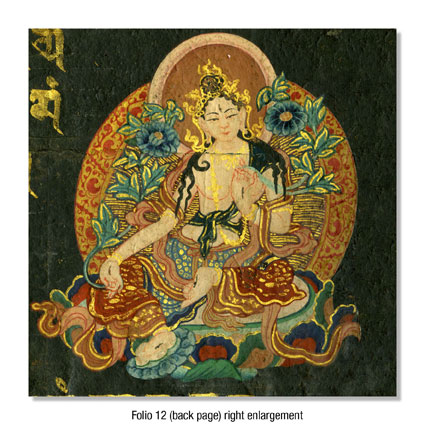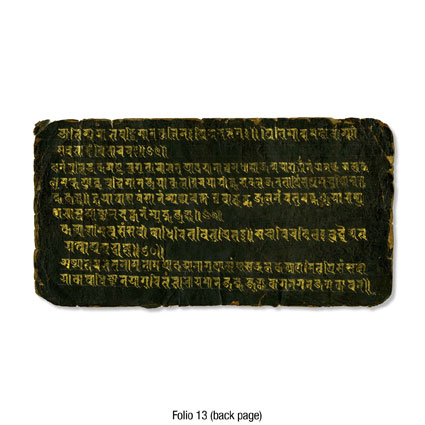ABM 015
Code: ABM 015
Country: Nepal
Style: Three Malla Kingdoms
Date: 1700 - 1800
Dimensions in cm WxHxD: 26.5 x 14
Materials: Black paper
Illuminated manuscript of the “Hymn to the 108 names of Arya-Tara”
This Nepalese manuscript is written in gold on indigo dyed paper and highlighted with illuminations. It contains the “Hymn to the 108 names of Noble Tara.” Tara “the liberator” is probably the most important female deity of all Buddhism. She is famous for reacting swiftly and efficiently to help sentient beings. Under her principal manifestation, she is of green emerald colour and symbolises awakened activity and active compassion.
The recitation of Tara’s names is an ancient practice intended for the worshipper to bring health, luck, success, drive away diseases, dangers, and obstacles and bring happiness to all sentient beings. Her cult was very popular in India from the 6th century onwards, especially among travelling merchants. The recitation of Tara’s names is both a practice of evocation of her numerous qualities and an invocation of the deity.
Tara is a bodhisattva who, according to tradition, vowed to manifest as a female until all beings are liberated from samsara. The devotion for Tara was popularised in Tibet by the Indian scholar Atisha (982-1054). There are a multitude of aspects of Tara –green, white, 21 manifestations, etc.– each with a different appearance and function, and the Green or “Dark” Tara is the source of them all.
This Nepalese manuscript is written in gold on indigo dyed paper and highlighted with illuminations. It contains the “Hymn to the 108 names of Noble Tara.” Tara “the liberator” is probably the most important female deity of all Buddhism. She is famous for reacting swiftly and efficiently to help sentient beings. Under her principal manifestation, she is of green emerald colour and symbolises awakened activity and active compassion.
The recitation of Tara’s names is an ancient practice intended for the worshipper to bring health, luck, success, drive away diseases, dangers, and obstacles and bring happiness to all sentient beings. Her cult was very popular in India from the 6th century onwards, especially among travelling merchants. The recitation of Tara’s names is both a practice of evocation of her numerous qualities and an invocation of the deity.
Tara is a bodhisattva who, according to tradition, vowed to manifest as a female until all beings are liberated from samsara. The devotion for Tara was popularised in Tibet by the Indian scholar Atisha (982-1054). There are a multitude of aspects of Tara –green, white, 21 manifestations, etc.– each with a different appearance and function, and the Green or “Dark” Tara is the source of them all.





